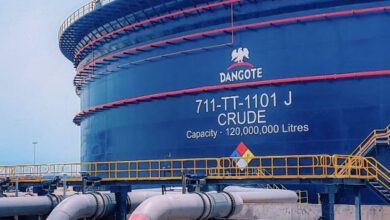Oil Prices Slide As Red Sea Transport Disruptions Ease

Oil prices fell more than 1% on Thursday as concerns eased about shipping disruptions along the Red Sea route, even as tensions in the Middle East continue to fester.
Front month February Brent crude futures were down $1.02, about 1.3%, at $78.63 a barrel by 1443 GMT in subdued trade ahead of their imminent expiry, while the more active March contract was down 92 cents, about 1.2%, at $78.62 a barrel.
U.S. WTI crude futures were trading 82 cents, or about 1.1%, lower at $73.29 a barrel. Oil prices dropped nearly 2% on Wednesday as major shipping firms began returning to the Red Sea.
Denmark’s Maersk will route almost all container vessels sailing between Asia and Europe through the Suez Canal from now on while diverting only a handful around Africa, a Reuters breakdown of the group’s schedule showed on Thursday.
Major shipping companies, including container giants Maersk and Hapag-Lloyd (HLAG.DE), stopped using Red Sea routes and the Suez Canal earlier this month after Yemen’s Houthi militant group began targeting vessels, disrupting global trade.
However, a U.S.-led coalition to quell tensions in the Red Sea has not so far yielded coordinated action as hoped.
A week after the launch of the maritime force, many allies do not want to be associated with it, partly reflecting the fissures created by the conflict in Gaza, which has seen the U.S. maintain firm support for Israel even as international criticism rises over its offensive.
Israel has escalated its ground war in Gaza sharply since just before Christmas, with Israel’s chief of staff Herzi Halevi telling reporters this week that the war would go on “for many months”.
U.S. government data on fuel stockpiles is due on Thursday, delayed by a day due to the Christmas holiday on Monday.
Data from the American Petroleum Institute industry group on Wednesday showed crude stocks rose 1.84 million barrels in the week ended Dec. 22, against estimates from seven analysts polled by Reuters for a drop of 2.7 million barrels.
Meanwhile, the growing prospect of interest rate cuts in Europe and the U.S. in 2024 are positive from an oil demand perspective.
“The market is likely to try the upside again … maybe in the early new year, also on expectations of a recovery in fuel demand thanks to monetary easing in the United States and higher kerosene demand during the winter in the northern hemisphere,” said Hiroyuki Kikukawa, president of NS Trading, a unit of Nissan Securities. (Reuters)






